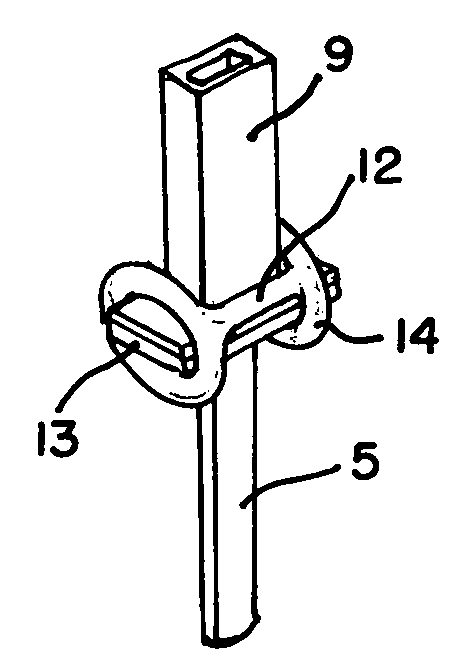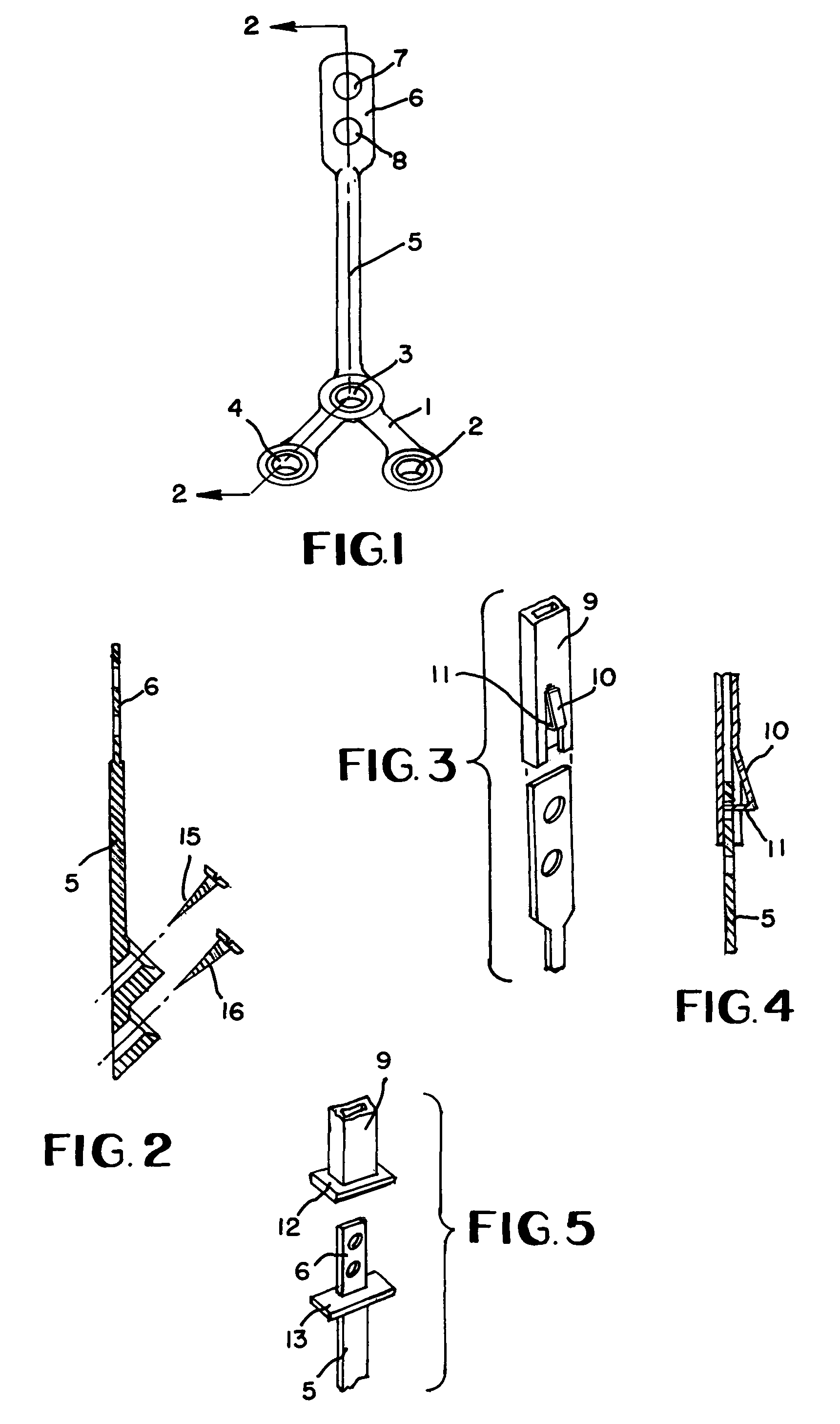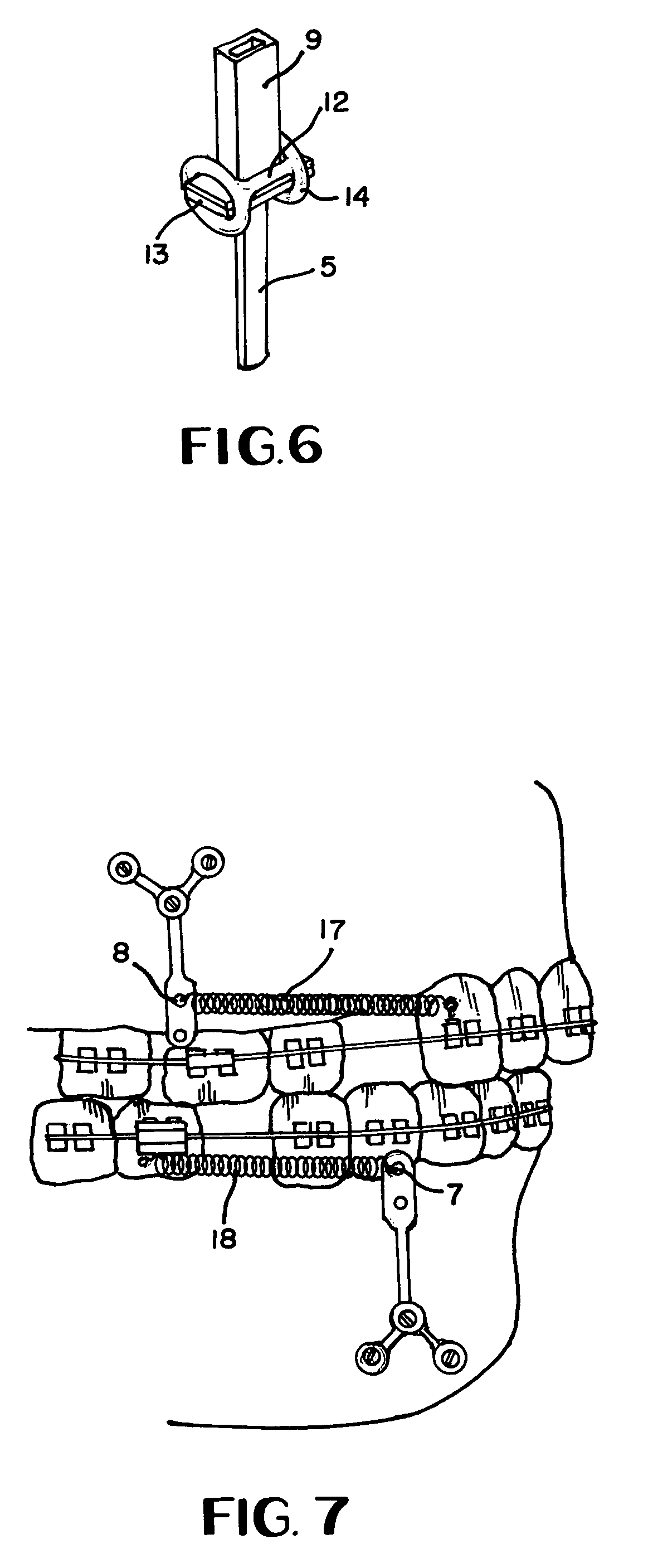Orthodontic anchor
a technology for orthodontics and anchors, applied in the field of orthodontics, can solve the problems of undesirable displacement of anchor teeth, such as molars, and achieve the effect of facilitating easy placement in the mouth and reducing adverse reactions
- Summary
- Abstract
- Description
- Claims
- Application Information
AI Technical Summary
Benefits of technology
Problems solved by technology
Method used
Image
Examples
Embodiment Construction
[0013]With reference to the drawings, and in particular FIG. 1, the orthodontic anchor according to this invention is shown and which is generally planar in configuration and including Y-shaped connecting portion 1 having beveled apertures 2, 3 and 4 formed therein. Of course, connecting portion 1 can be of varying shapes besides that shown in FIG. 1 such as an L-shaped configuration. In addition, any number of apertures may be employed and may be disposed at any location on the connecting portion as dictated by the location requirements of the particular orthodontic application.
[0014]The anchor shown in FIG. 1 further includes elongated stem 5 with emerging portion or top end 6 formed thereon remote from Y-shape connecting portion 1. Stem 5 is generally round or rectangular so that it can be easily bent for proper placement of connecting portion 1. Apertures 7 and 8 are formed in emerging portion 6, the number and location of which are variable, as desired.
[0015]With reference to F...
PUM
 Login to View More
Login to View More Abstract
Description
Claims
Application Information
 Login to View More
Login to View More - R&D
- Intellectual Property
- Life Sciences
- Materials
- Tech Scout
- Unparalleled Data Quality
- Higher Quality Content
- 60% Fewer Hallucinations
Browse by: Latest US Patents, China's latest patents, Technical Efficacy Thesaurus, Application Domain, Technology Topic, Popular Technical Reports.
© 2025 PatSnap. All rights reserved.Legal|Privacy policy|Modern Slavery Act Transparency Statement|Sitemap|About US| Contact US: help@patsnap.com



